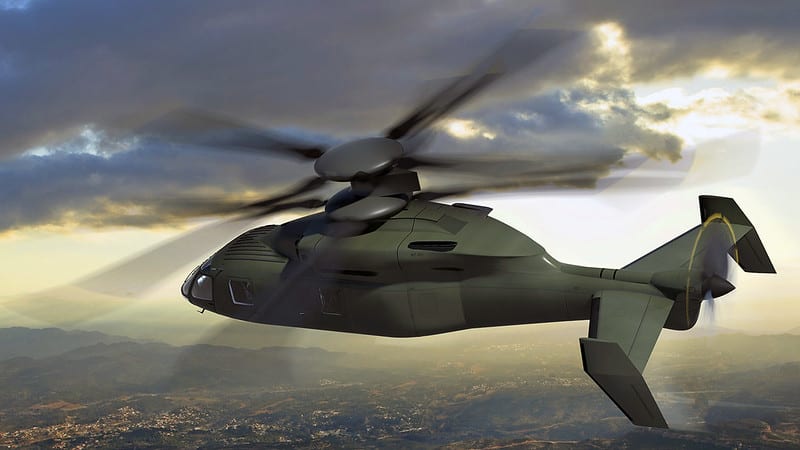
The Boeing-Sikorsky SB-1 Defiant will likely compete for FLRAA, a program that the Army wants Congress to fund at higher levels to reduce risk, as the Army seeks common signal and other interfaces for the aircraft. Photo: Lockheed Martin
The U.S. Army wants $75 million in Fiscal 2020 for risk reduction on the Future Long-Range Assault Aircraft (FLRAA)–nearly $43 million more than its budget request–as the service seeks common electrical, mechanical, and signal interfaces for the aircraft.
Congress provided $19 million in Fiscal 2019 for FLRAA, and a simple Continuing Resolution (CR) will likely not give the Army its desired $75 million. Enacted on Sept. 17, the current CR is valid through Nov. 21, and lawmakers continue work on on H.R. 2740, a package of four appropriations bills, including defense.
The Army plans to issue a draft FLRAA request for proposals in Fiscal 2021, but that may not happen on schedule, if the service does not receive the increased funding for program risk reduction, Army Maj. Gen. Thomas Todd, the program executive officer for aviation, told Avionics International in an interview at the annual Association of the United States Army (AUSA) conference in Washington, D.C. “Quite frankly, the vendors won’t be ready for competition,” without the funding increase, Todd said.
“We got a few cross cutting measures that we have to execute, programs like modular open systems architecture [MOSA], coming out of CFT [Cross Functional Team] efforts that is going to take really what the 60 Victor [Lockheed Martin UH-60V helicopter] did in our platforms in the first open systems architecture that we had and grow it to a level where we can proliferate it across all the platforms,” Todd told an AUSA industry forum on Future Vertical Lift (FVL) on Oct. 16. “We’re looking forward to seeing that happen. What that equals is electrical, signal and mechanical interfaces that are common. So if we’re to be common and ultimately have those interface control documents that I can then hand out to you, or you can hand to me and rapidly integrate, that’s the ultimate goal.”
Todd said that one new area that will require industry support is operational power to support the plethora of onboard systems, including Aircraft Survivability Equipment (ASE) and communications, on FVL aircraft.
“Our on-board systems requirements are growing exponentially,” he said.
Tying such systems together will be another priority area for the Army.
“We have to network this all together,” Todd said. “We have relied heavily on the IDM [Improved Data Modem] of the past. At the end of the day, it’s going to take more processing power, more storage capacity and a better transport layer on this aircraft to be able to do the things we want to do with data. At the end of the day, we have to have an Aviation Mission Common Server [AMCS], whatever that ends up being.”
Such an on-board server, a “flying Cloud,” is “going to be important,” Todd said. “We’re going to have to push a lot of data and power a lot of systems.”